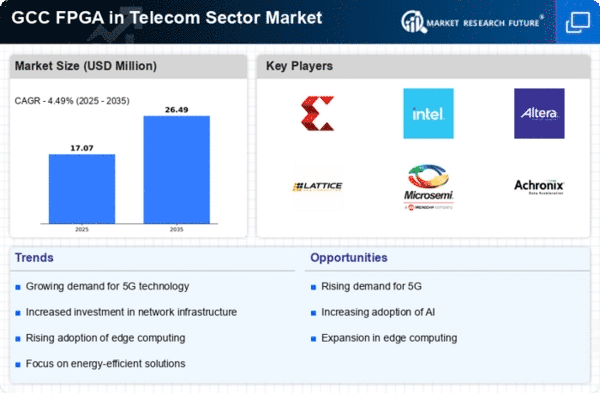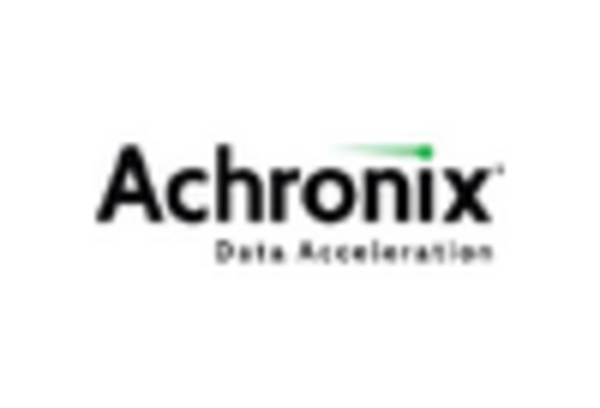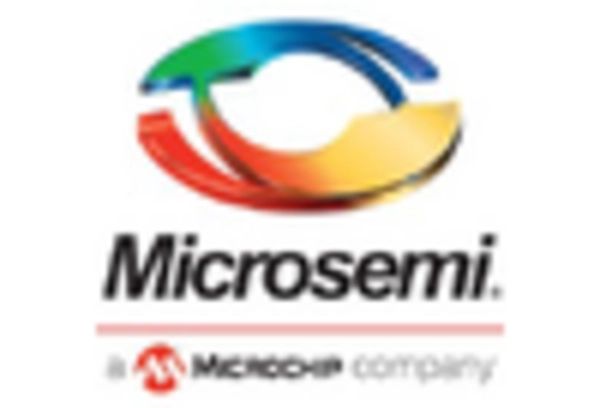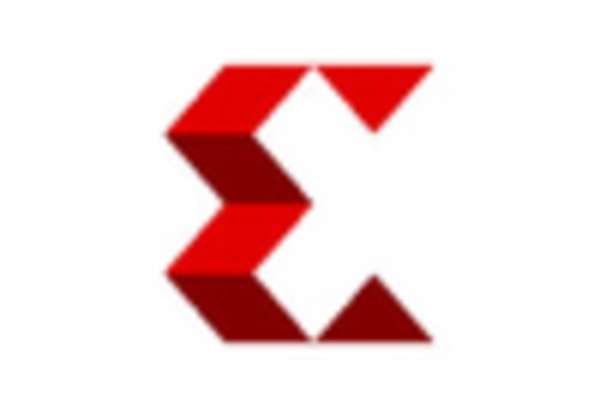The fpga in-telecom-sector market is currently characterized by a dynamic competitive landscape, driven by rapid technological advancements and increasing demand for high-performance computing solutions. Key players such as Xilinx (US), Intel (US), and NXP Semiconductors (NL) are strategically positioning themselves through innovation and partnerships. Xilinx (US), for instance, has focused on enhancing its product offerings with advanced AI capabilities, which appears to resonate well with the growing need for intelligent network solutions. Meanwhile, Intel (US) has been actively pursuing mergers and acquisitions to bolster its portfolio, indicating a strategy aimed at consolidating its market presence and expanding its technological capabilities. NXP Semiconductors (NL) has also been emphasizing regional expansion, particularly in the GCC, to tap into the burgeoning telecom infrastructure projects, thereby shaping a competitive environment that is increasingly collaborative yet fiercely competitive.
In terms of business tactics, companies are localizing manufacturing and optimizing supply chains to enhance operational efficiency and reduce costs. The market structure appears moderately fragmented, with several players vying for market share, yet the collective influence of major companies like Intel (US) and Xilinx (US) is significant. Their strategies not only drive innovation but also set benchmarks for emerging players, thereby influencing the overall market dynamics.
In October 2025, Xilinx (US) announced a strategic partnership with a leading telecom operator in the GCC to develop next-generation 5G solutions. This collaboration is poised to leverage Xilinx's advanced FPGA technology, which could enhance network performance and reliability. The strategic importance of this partnership lies in its potential to accelerate the deployment of 5G infrastructure, positioning Xilinx (US) as a key player in the region's telecom evolution.
In September 2025, Intel (US) completed the acquisition of a prominent FPGA design firm, which is expected to enhance its capabilities in developing customized solutions for telecom applications. This move signifies Intel's commitment to strengthening its position in the FPGA market, particularly in sectors requiring high-performance computing. The acquisition is likely to facilitate the integration of innovative technologies into Intel's existing product lines, thereby enhancing its competitive edge.
In August 2025, NXP Semiconductors (NL) launched a new line of FPGAs specifically designed for telecom applications, focusing on energy efficiency and performance. This product launch reflects NXP's strategy to address the growing demand for sustainable solutions in the telecom sector. The introduction of these FPGAs is expected to attract customers seeking to optimize their network operations while minimizing environmental impact, thus reinforcing NXP's market position.
As of November 2025, current competitive trends in the fpga in-telecom-sector market are increasingly defined by digitalization, sustainability, and the integration of AI technologies. Strategic alliances among key players are shaping the landscape, fostering innovation and collaboration. Looking ahead, it is anticipated that competitive differentiation will evolve, shifting from price-based competition to a focus on technological innovation and supply chain reliability. Companies that can effectively leverage these trends are likely to secure a more robust market position in the future.
















Leave a Comment